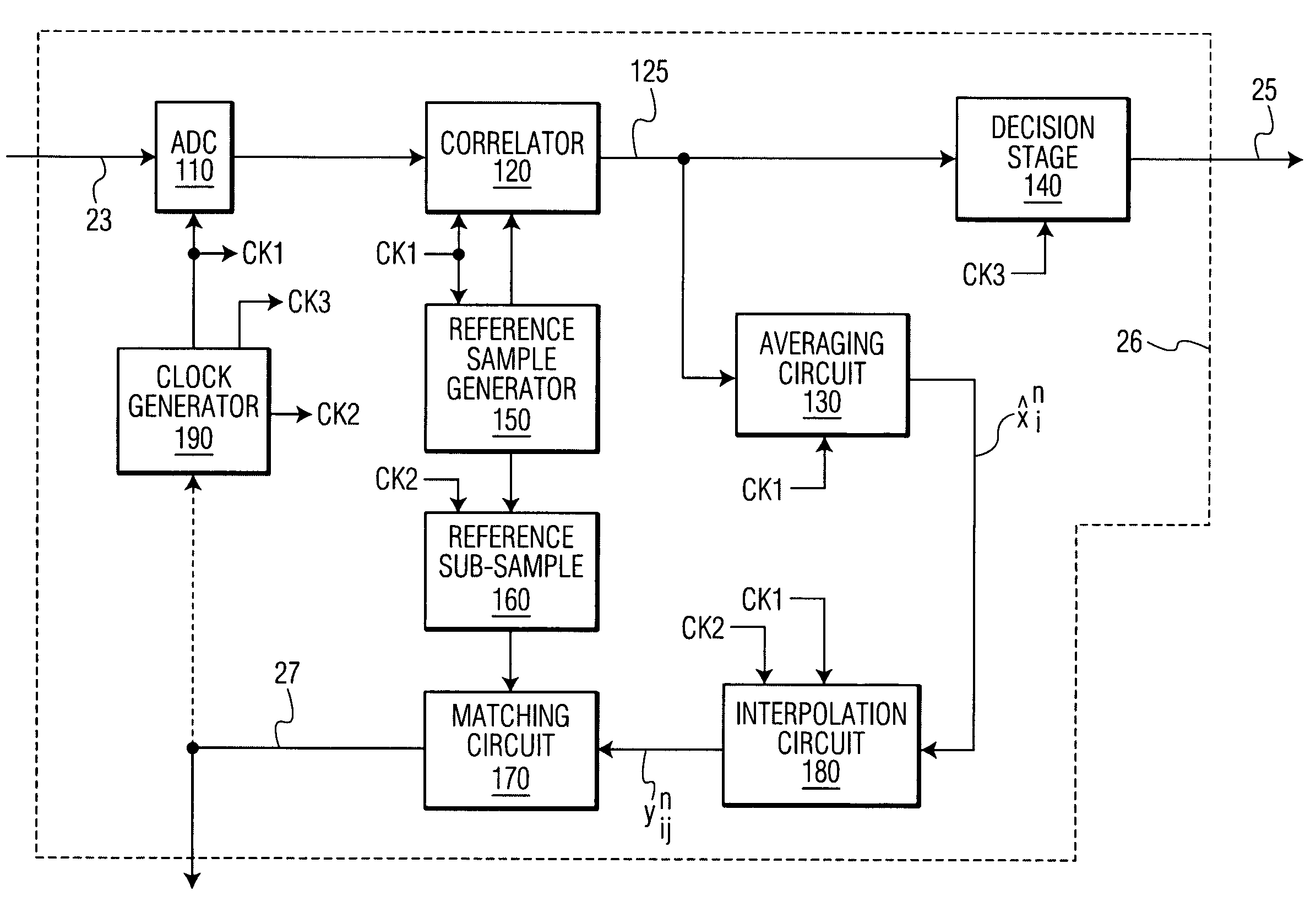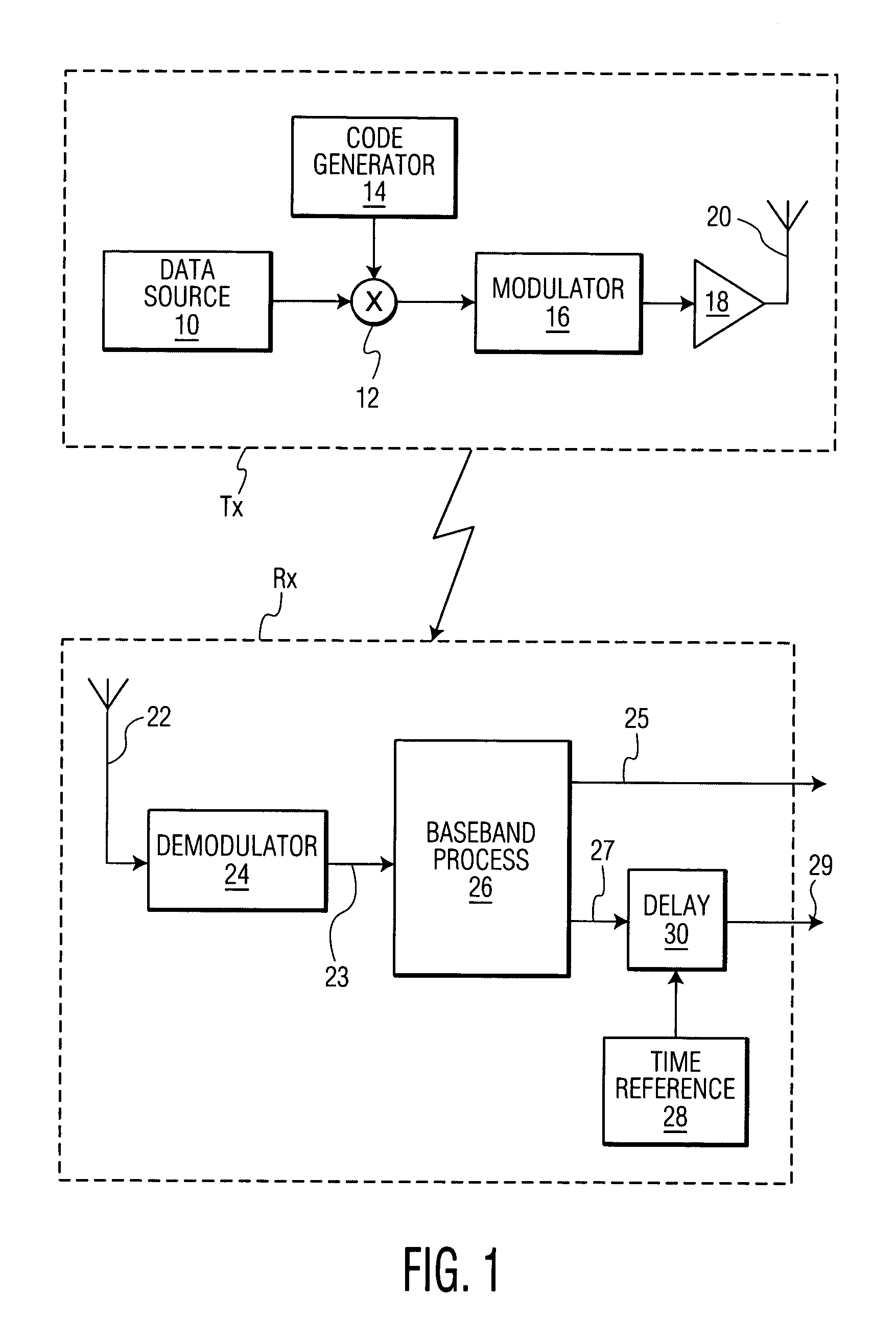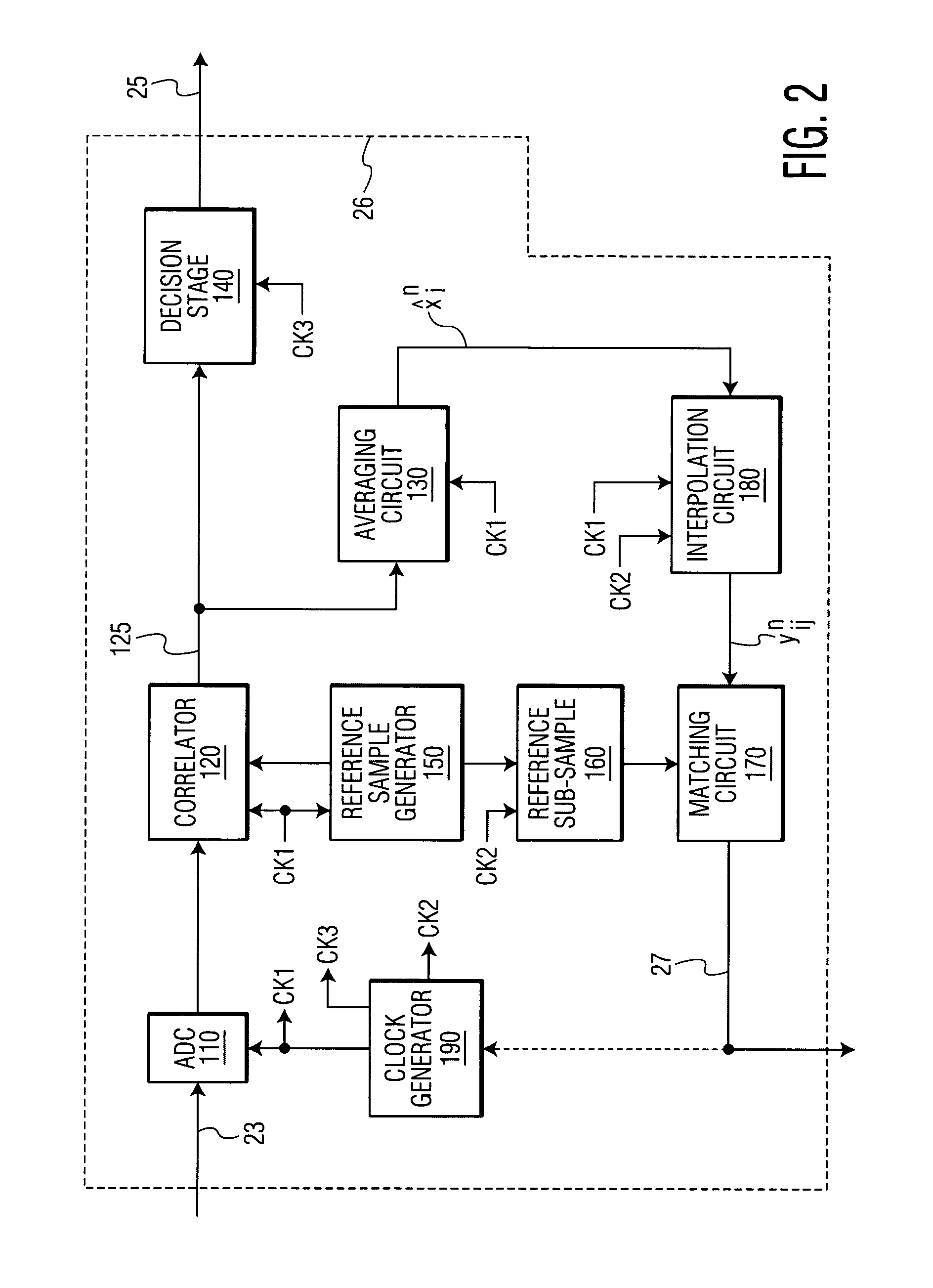Method of detecting, and a receiver for, a spread spectrum signal
a spread spectrum and receiver technology, applied in the direction of synchronisation arrangement, instruments, measurement devices, etc., can solve the problems of increasing power consumption and complexity, increasing power consumption, increasing time delay, etc., and achieve the effect of avoiding the higher power consumption and circuit complexity
- Summary
- Abstract
- Description
- Claims
- Application Information
AI Technical Summary
Benefits of technology
Problems solved by technology
Method used
Image
Examples
Embodiment Construction
[0025]Referring to FIG. 1, the spread spectrum system comprises a transmitter Tx and a receiver Rx. The system uses a C chip P-N (psuedo-noise) sequence for spreading. For convenience of description it will be assumed that the system operates in the 2.4 GHz ISM band with a bit rate of 200 kbit.s−1, with the signal spread to 2.2 MHz using a sequence of 11 chips (C=11) at a chip rate of 2.2 Mchip.s−1. The transmitter Tx comprises a data source 10 which produces symbols in the form of bits at 200 kbit.s−1. The symbols are supplied to a mixer 12 to which is connected a code generator 14 which supplies an 11 chip P-N sequence. The 2.2 MHz spread signal is supplied by the mixer 12 to a GFSK modulator 16, the output of which is a modulated radio signal which is amplified in a power amplifier 18 and propagated by an antenna 20. In the course of being propagated the radio signal will be subject to noise and distortion.
[0026]At the receiver Rx, the propagated radio signal is received by an an...
PUM
 Login to View More
Login to View More Abstract
Description
Claims
Application Information
 Login to View More
Login to View More - R&D
- Intellectual Property
- Life Sciences
- Materials
- Tech Scout
- Unparalleled Data Quality
- Higher Quality Content
- 60% Fewer Hallucinations
Browse by: Latest US Patents, China's latest patents, Technical Efficacy Thesaurus, Application Domain, Technology Topic, Popular Technical Reports.
© 2025 PatSnap. All rights reserved.Legal|Privacy policy|Modern Slavery Act Transparency Statement|Sitemap|About US| Contact US: help@patsnap.com



